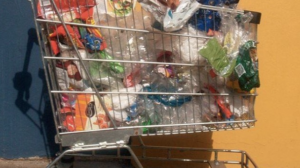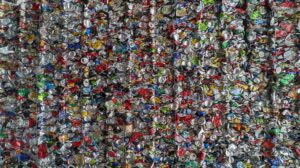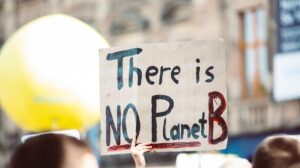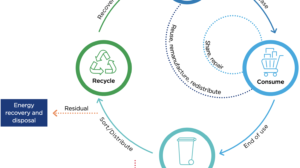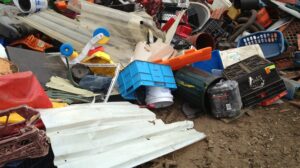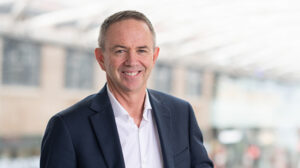Infrastructure
6 April 2023
WA shows the way with waste infrastructure Plan
The Draft Western Australian Waste and Resource Recovery Infrastructure Plan 2023 is out and open for comment until 23 June 2023. This is a significant milestone and a valuable template for other States.
litter
13 March 2023
Waste myth #2: REDCycle stockpiling plastic shows that recycling is a rort
We keep hearing and reading (what we think are) “waste myths” on-line and in on mainstream media.
Mike Ritchie has decided to dispel those myths in this "Waste myths" series of articles.
Policy
28 February 2023
Waste myth #1: Recycling contamination
We keep hearing and reading (what we think are) “waste myths” on-line and in on mainstream media.
Mike Ritchie has decided to dispel those myths starting with the longest lived and most pervasive one.
Infrastructure
12 December 2022
Auditor general report on the National Waste Policy Action Plan
The Auditor General’s Report on the effectiveness of the National Waste Policy Action Plan has found that it sets the right targets but is poorly enacted at all levels of government.
Circular Economy
2 December 2022
Achieving our waste targets
By: Mike Ritchie, MRA Consulting Group In 2019, Australia’s environment ministers and the Australian Local Government Association (ALGA) agreed to the National Waste Policy and Action Plan (NWPAP). For the first time, all Governments were committing to collective action on recycling, waste management and the creation of a more Circular Economy. Our governments finally agreed […]
Climate Change
16 November 2022
A review of the draft NSW Climate Change Policy and Action Plan
The NSW EPA has released the draft Climate Change Policy and Action Plan that aims to set the framework for halving greenhouse gas emissions by 2030 (from 2005 levels), zeroing emissions by 2050, and improving NSW’s resilience to climate change impacts.
Circular Economy
15 September 2022
The end of waste- Planning and the Circular Economy
In, NSW Waste and Sustainable Materials Strategy 2041, the State's most recent waste strategy, the NSW Department of Planning, Infrastructure and Environment has stopped talking about the waste hierarchy and started talking about the circular economy
Circular Economy
1 July 2022
The 2021 national plastics plan in a nutshell
Australia’s National Plastics Plan 2021 was released a year ago. Sadly, it looks like most of its targets will be missed. Nevertheless, the Plan provides a strong foundation for tackling plastic waste in Australia.
EfW
15 June 2022
Sydney facing looming waste crisis
Sydney has three options to avoid a looming waste crisis – boost recycling by increasing the waste levy to $200, build new landfills, or allow more energy recovery projects, says Mike Ritchie of MRA Consulting Group.
Carbon
28 January 2022
Creating a real carbon pump
The COP26 climate change summit took place between 31 October and 13 November 2021 in Glasgow. The reason we needed this summit is that we are very efficient at pumping carbon dioxide into the atmosphere but singularly useless at getting it back out again.
Carbon
11 November 2021
What does the IPCC report mean?
The COP26 climate change summit took place between 31 October and 13 November 2021 in Glasgow. The reason we needed this summit is that we are very efficient at pumping carbon dioxide into the atmosphere but singularly useless at getting it back out again.
Legislation
23 September 2021
NSW Waste and Sustainable Materials Strategy 2041 – a Planning Perspective
The NSW Waste and Sustainable Materials Strategy 2041 has ambitious targets to achieve an 80% average recovery rate from all waste streams, triple the plastics recycling rate and halve the amount of organic waste sent to landfill by 2030.
Sign up for all our latest articles
Blog categories
- Awards (10)
- AWT (1)
- Bin Trim (2)
- Carbon (27)
- Careers (2)
- Circular Economy (55)
- Climate Change (37)
- Compost (23)
- EfW (15)
- Event (13)
- FOGO (34)
- Grants (83)
- In the Media (17)
- Infrastructure (34)
- Landfill (45)
- Legislation (17)
- Levy (7)
- Licencing (5)
- litter (11)
- MRA News (61)
- MRA Projects (12)
- NSW (16)
- Organics (31)
- Planning & Approvals (11)
- Policy (91)
- Recycling (94)
- Regulations (5)
- State of Waste (20)
- State Strategy (29)
- Strategy (54)
- Waste (116)
- Waste Myths (10)
- wastenot (35)

